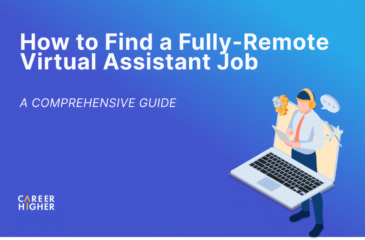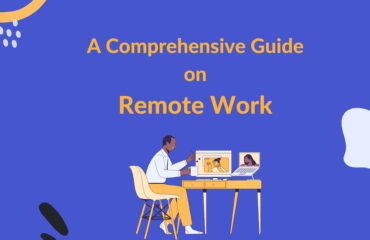Table of Contents
There’s a popular saying by Confucius: “Choose a job you love, and you will never have to work a day in your life”. But how do you identify that job? And how do you decide you are passionate enough to work on it every day? Identifying your dream role is not as easy as it sounds. You need to do a lot of research, create an alignment between your interests, skills, and the job market, and finally weigh your options.
According to a study, almost 80% of professionals are not engaged in their jobs. Engagement at the workplace refers to employees’ commitment to the goals of the organization. This has a direct impact on their productivity and wellness. Thus, if you are not satisfied with your current job, it becomes all the more important to find your dream role and work towards landing it. Through this article, we will help you figure out your dream job so that you get a happy and healthy work-life. Let’s have a look at what you should consider:
1. Identify your interests
The first step is to understand your interests and explore related career options. For example, if you have an interest in designing, you can explore design-related roles, such as fashion designing, graphic designing, or UX designing. You can use the following resources to research your options:
a) Career books
High-quality career books are always a good option for career explorers as they are informative and insightful. Depending on what you choose, you may have an opportunity to read about different professions and their pros and cons and decide what suits you best. Here are some career-related book suggestions for you:
- Switch: How to Change Things When Change Is Hard by Chip Heath and Dan Heath
- Get a Life, Not a Job by Paula Caligiuri and Jay Snyder
- Do What You Are: Discover the Perfect Career for You Through the Secrets of Personality Type by Paul D. Tieger, Barbara Barron, and Kelly Tieger
b) Industry Experts
Engaging with an industry expert on LinkedIn is a great way to inquire about that specific industry. You will gain first-hand information, with an in-depth focus on the pros and cons of working in that industry. It will also aid you in understanding the work-life balance, quality of life, and financial stability that come along.
c) Career Strategists
Career strategists make sure you elucidate your options and make an informed decision. This is especially helpful if you are confused about more than one industry or role., Career strategist counselors will help you compare and analyze those options, and give you a clearer picture of the market. And once you choose a path to follow, they will instruct you on how to approach it and land that job you dream of.
d) Previous Jobs
When determining a choice for the future, it is essential to know what worked for you in the past and what didn’t. The best way to understand this is to look back at your previous jobs or your current role if you are employed and assess your likes and dislikes. These could be influenced by your external environment too. So with a change in time, these are bound to change. For example, over the last few months, a healthy professional lifestyle has gained immense importance. While earlier you may not prioritize your well-being overwork, you may have started thinking about it now.
So when you think about identifying your dream job, think about the kind of work culture and environment you would prefer working in. Are you looking for a typical 9-5 job or do you want to work flexibly from home? Or are you looking for a hybrid model to work from both office and home? It’s all about your choices and there are no right or wrong answers. Before the pandemic hit, comfortable professional life was hardly prioritized. However, after the pandemic, people have started giving preference to their mental and physical health. So, when you are making decisions about your dream job, make sure to consider what has worked well for you in the past and what you want to change in your next role.
2. Analyze your strengths
Another crucial step is to analyze your strengths while keeping in mind your interests. A combination of your skills/expertise and your personal interests will help you narrow down the options and identify your dream role. Some ways that can help you understand your strengths are:
a) Career/ personality tests
Such tests help candidates understand the impact of various personal attributes on success and satisfaction with different career options. Some of the tests that you can try are CareerPlanner by Prospects, the Myers-Briggs Type Indicator (MBTI) test, or 16 Personalities, which is a simplified version of the MBTI test. However, we recommend being cautious of fake tests that ask for unnecessary information and do not aim to provide accurate results. Avoid going for random quizzes like “Which career suits you best?”. These not only waste your time but may also misguide you.
b) 360-degree feedback
360-degree feedback is a powerful tool to understand your strengths and areas for improvement. In a corporate setting, the purpose of this is to provide timely feedback to enhance performance. In this case, it will help you identify what you do best and identify a career path that aligns with your interests and strengths. It is an opportunity for you to get feedback from your colleagues, managers, friends and family, and even yourself.
c) Previous experience
Every job that you do will have some highs and lows. This could be a great way to understand what are your strengths and areas of improvement. Your strengths can help you determine your interests and potential successful areas that you can work in. On the other hand, your areas of improvement will help you identify domains that you should likely stay away from. However, we do recommend working on your areas of improvement to enhance your skills and become a better professional.
3. Make a decision
The next step is to make a decision based on your research and analysis. Make a list with all your options and rank them based on your preference. Your interest in the role, requirements, job market, pay, and work-life balance are some of the factors that will impact your rankings. The highest-ranked job role is probably the one you will love and want to pursue.
Before taking the next step, you should confirm your decision. A good way to assess your decision is to understand how you feel about it. If you don’t feel good about it, we recommend re-assessing your evaluation or talking with an expert. Making the right decision is crucial, as being in a less preferred job can result in physical and mental exhaustion, as well as high levels of stress.
4. Submit applications
The next step is where the real action starts in your job search. After you have made all the crucial decisions, it is time to finally start looking for your dream roles. Based on your preferences, choose specialized job search sites to get the best options in a time-efficient manner. For example, if you are looking for jobs in finance, efinancialcareers would be a great resource. On the other hand, if you are looking for remote jobs specifically, go for a remote job search site, such as FlexJobs or RemoteOK.
Once you have identified the roles, make sure that you apply with well-written documents that are customized for each job. Your resume should provide an eye-catching brief of your career while highlighting your expertise, experience, and skills. Make sure to use professional language and tone of voice. Additionally, supplement it with a well-written cover letter. Tailor your cover letter to the requirements of your target employer while demonstrating your motivation for the role. Furthermore, align your LinkedIn profile with your resume by adding all the relevant information and using the right keywords to enhance discoverability.
Identifying your dream role is hard, but what’s harder is being stuck in a job that you dislike. Some people are hesitant about moving to a different career because they are ‘too old’ to switch to their dream job. The list of people who achieved their dream jobs in their 40s and later is endless. So, if you think you are not happy in your current job, now is the time to start chasing your dream role.











